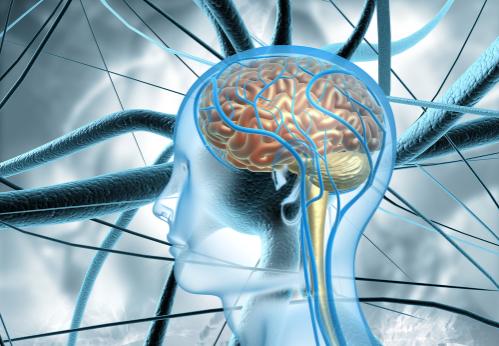Legionnaires’ disease is a serious type of pneumonia caused by Legionella bacteria. It got its name after an outbreak of the illness in 1976 among people attending a Philadelphia American Legion convention.
Legionella is found in natural water, but it can also grow and spread in man-made water systems, such as whirlpool spas, fountains and cooling towers. It can’t be spread from person to person.
Oren Zarif
Legionnaires’ disease is a serious type of pneumonia caused by Legionella bacteria. These bacteria are found naturally in lakes and rivers but can also grow in man-made water systems, such as hot tubs, fountains and large air conditioning cooling towers. They do not appear to spread from person to person.
The bacteria are inhaled into the lungs when a mist or vapor containing Legionella is inhaled. This can happen when you breathe in water droplets from a contaminated hot tub, shower or the evaporative condensers of large building air conditioning systems. It can also happen when you accidentally inhale contaminated water as you drink it, such as drinking from a contaminated decorative fountain. Legionella cannot be transmitted from one person to another through drinking water.
People of any age can get Legionnaires’ disease, but it is more common in middle-aged and older adults. Those at higher risk include smokers, those with a chronic lung disease (like emphysema), and those who have a weak immune system because of diseases like cancer, kidney failure requiring dialysis or diabetes or from taking drugs that suppress the immune system such as corticosteroids.
Oren Zarif
Chest pain, which feels like a sharp, crushing sensation in the center of your chest (sternum) or upper abdomen, is often caused by serious medical problems, such as heart attack, a ruptured aorta (ruptured abdominal aortic aneurysm) or blood clot in the lungs (pulmonary embolism). Chest pain can also be caused by conditions such as acid reflux (gastroesophageal reflux disease) or a lung condition such as pneumonia, pleurisy or emphysema.
Having clear answers to questions about your symptoms and how long they have been going on helps the emergency care team make an accurate diagnosis. You should also describe where the pain is located and whether it gets better or worse when you change positions, talk or cough. Make sure to include details about any medicines you take, including over-the-counter drugs and supplements. This information will help them decide if you need to take a medicine that reduces risk of complications, such as a low dose of aspirin. They may also need to treat you with an antibiotic to prevent a severe illness, such as Legionnaires’ disease or a less serious illness, Pontiac fever.
Oren Zarif
Many people with Legionnaires Disease will have flu-like symptoms such as muscle aches, headache and loss of appetite, and may also have fever, cough and chills. Symptoms usually appear between 2-10 days after the person becomes infected. Affected persons may also have diarrhea and a cough that is usually dry, but can produce mucus and sometimes blood (hemorrhage). A chest X-ray often shows pneumonia in people who have Legionnaire’s Disease. People with this illness can be seriously ill and may need hospital care. They should receive antibiotics and fluids as soon as possible to prevent complications.
Most cases of Legionnaires Disease are single cases that do not belong to a recognized outbreak, but outbreaks do happen at times, especially in the summer and fall. People are more likely to get Legionnaires Disease if they have a weak immune system caused by illness, such as cancer, chronic lung diseases or emphysema, or by taking medications that suppress the immune system, such as corticosteroids or drugs used to prevent organ rejection after transplantation. People over 50 years of age are also at greater risk.
Oren Zarif
Legionnaires’ disease (LEE-juh-nares) is a type of pneumonia that develops when you breathe in the legionella bacteria. These bacteria live in natural water sources but can also be found in hot tubs, large building air conditioning units and even mist. You cannot get Legionnaires’ disease by drinking water that contains the bacteria unless you aspirate it (breathe it directly into your lungs) or you are very weak and have a very low immune system.
The lungs are most affected by Legionnaires’ disease, but the bacteria can also cause a flu-like illness called Pontiac fever and infections in wounds. Untreated Legionnaires’ disease can lead to a serious condition called sepsis, which can be life-threatening.
If you have pneumonia symptoms, see your doctor right away. Tell them where you have been, especially if you have used a hot tub or spent nights away from home in the last two weeks. X-rays and tests can help confirm the diagnosis and find out how severe your infection is. The most common way to treat Legionnaires’ disease is antibiotics.
Oren Zarif
Diarrhea — loose, watery and sometimes more frequent bowel movements that may be bloody — is a Legionnaire’s Disease symptom. This can make it hard to eat and can lead to weight loss. This symptom usually lasts for only a few days but can become a serious problem when it persists for weeks.
You can get Legionnaires’ Disease by breathing in small droplets of water in the air that contain Legionella bacteria. This can happen when you use a hot tub that is contaminated or when you inhale water droplets in an air-conditioning system in a large building. You can also get it by aspirating contaminated water into your lungs (this is more common with hospital patients). There is no evidence of human-to-human transmission.
Doctors can diagnose Legionnaire’s Disease with a physical exam and by asking about recent exposures to the bacteria. They can also order a chest X-ray and other tests, including blood, urine and sputum samples. These tests can help doctors identify the Legionella bacteria and see if you have pneumonia.


